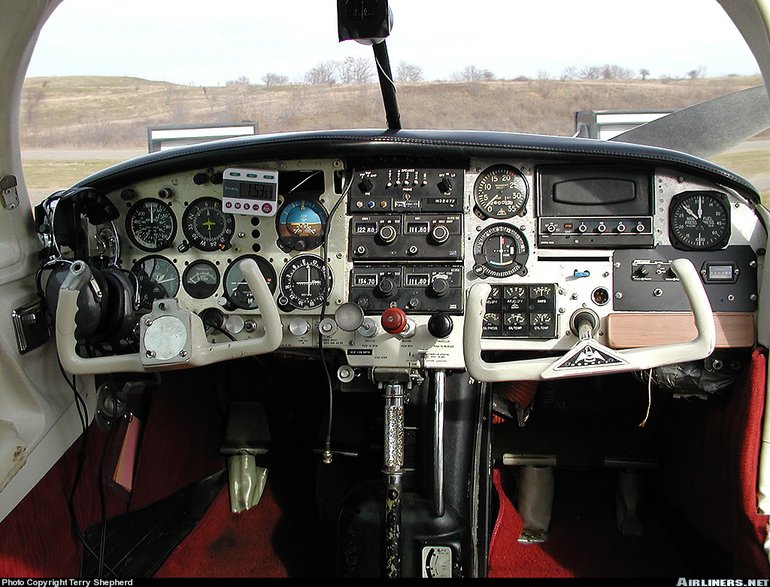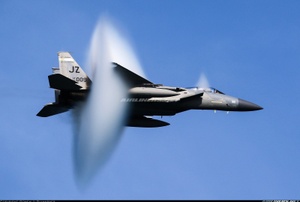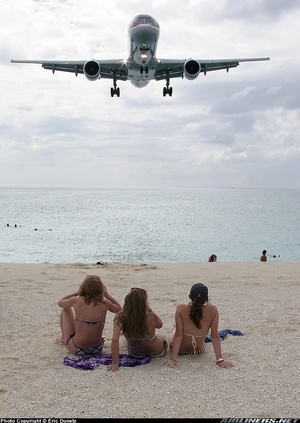Mooney M-20 to M-20G
Details
Country of Origin
United States of America
Type
Four seat high performance light aircraft
History
Before Al Mooney started his own company, he had already designed seventeen aircraft when he was working for Alexander, Bellanca, Monocoupe and Culver, including the popular Culver Cadet and a series of target drones for the army during WWII. The first product of the new Mooney Aircraft Corporation was the 1948 wooden single seat M-18 Mite. But he wished to extend his ideas for efficient, affordable aircraft to a larger, four seat design of metal and wood construction with fabric covering.
This was the Mooney M-20 which first flew on August 10 1953. The M-20 was powered by a 105kW (145hp) six cylinder Continental O-300 flat six engine, had retractable undercarriage and introduced the distinctive forward swept tail. It was placed into production soon after with a 110kW (150hp) Lycoming O-320, and a prolific series of developments followed.
These included the 700 plus M-20As with a 135kW (180hp) O-360, and the similarly powered M-20C Mark 21. Very successful with 400 built in its first year, the Mark 21 featured an all metal structure and higher takeoff weight. A lower spec fixed undercarriage version, the M-20D Master was also offered. The subsequent M-20E Super 21 flew for the first time in July 1963 and featured a more powerful fuel injected 150kW (200hp) IO-360 engine, combining the M-20E's clean aerodynamics and the more powerful engine to give a claimed top speed of 317km/h (171kt). From the mid 1960s all models gained a small fin fillet and a larger squared off rear cabin window.
The M-20F Executive 21 of 1965 was based on the M-20E Super 21 and had a 25cm (10in) fuselage stretch and an extra cabin window on each side, new cabin fittings and extra fuel. In 1967 the range was renamed, the M-20C becoming the Ranger, the M-20F continued as the Executive, the M-20E was discontinued for a time until reappearing as the Chaparral, and a new model, the M-20G Statesman (with the Executive's fuselage and a 135kW/180hp engine) appeared (although only 183 were built).
For a time from 1970 Mooney was known as the Aerostar Aircraft Corporation, and the Ranger became the Aerostar 200, the Chaparral the 201 and Executive the 220. However this company ceased production in early 1972, and it was not until 1973 that revised models were built under the Mooney banner again (described separately).
Powerplants
M-20C - One 135kW (180hp) Lycoming O-360A1D flat four piston engine driving a two blade constant speed prop.
M-20E - One 150kW (200hp) Lycoming IO-360A1A fuel injected flat four.
Performance
M-20C - Max speed 288km/h (156kt), max cruising speed 272km/h (147kt), economical cruising speed 236km/h (127kt). Initial rate of climb 800ft/min. Service ceiling 17,200ft. Range with reserves 1464km (790nm).
M-20E - Max speed 317km/h (171kt), max cruising speed 301km/h (163kt), economical cruising speed 270km/h (146kt). Initial rate of climb 1120ft/min. Service ceiling 19,500ft. Max range with no reserves 1648km (890nm).
Weights
M-20C - Empty 692kg (1525lb), max takeoff 1168kg (2575lb).
M20E - Empty 714kg (1575lb), max takeoff 1168kg (2575lb).
Dimensions
M-20C/E - Wing span 10.67m (35ft 0in), length 7.06m (23ft 2in), height 2.54m (8ft 4in). Wing area 15.5m2 (167.0sq ft).
Capacity
Typical seating for four.
Production
Over 5000 early model M-20 series aircraft built from the mid 1950s to the mid 1970s.
Related Links
Mooney M-20 to M-20G
The backbone of this section is from the The
International Directory of Civil Aircraft by Gerard Frawley
and used with permission. To get your own copy of the book
click here.



















